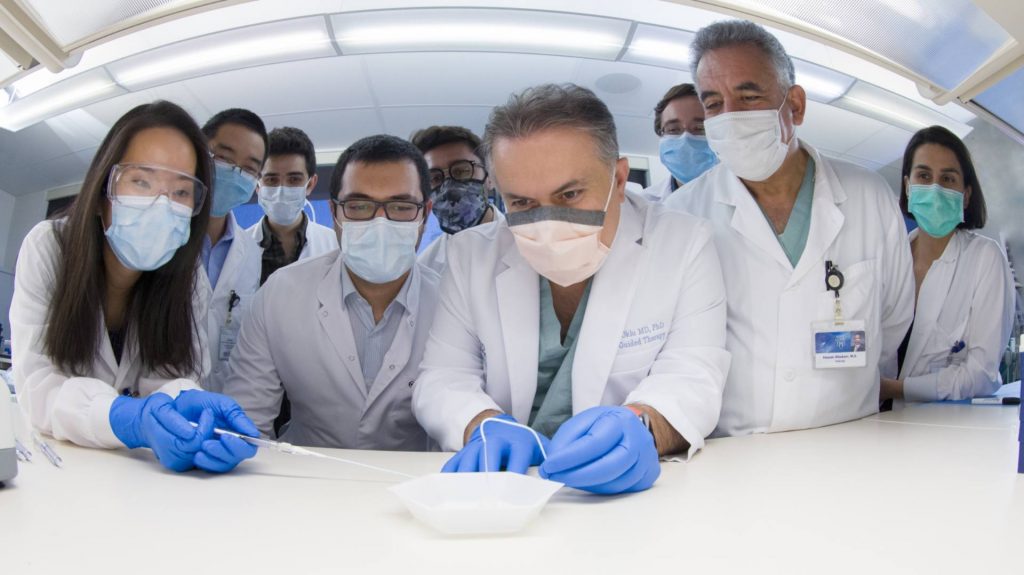-
Mayo Clinic researchers develop a tissue-derived bioactive gel to stop bleeding, aid in vascular healing

PHOENIX, AZ —Researchers at Mayo Clinic are studying the effects of a tissue-derived bioactive gel they developed to improve endovascular embolization – a minimally invasive procedure used to treat bleeding blood vessels and aneurysms.
The results of their latest preclinical study are published in the journal Advanced Materials.
Endovascular embolization involves a pinhole puncture in the femoral artery, placing catheters inside the artery and pushing metallic coils into the vessel to induce clotting to prevent further bleeding. For patients unable to form a clot within the coiled artery or patients on blood thinners for their mechanical valves or cardiac assist devices, coil embolization may not work, leading to breakthrough bleeding.
Senior author Rahmi Oklu, M.D., Ph.D., a vascular interventional radiologist and director of the Minimally Invasive Therapeutics laboratory at Mayo Clinic’s Arizona campus, and his team engineered a tissue-derived bioactive gel that would replace the use of coils within the procedure.
In preclinical models, the researchers found that the gel could be injected from a range of clinical catheters resulting in a quick stoppage of blood flow. The authors reported no fragmentation or migration of the gel. They also report that scar tissue had replaced 75% of the gel after 14 days.
Dr. Oklu says the tissue-derived bioactive gel is composed of a unique class of extracellular matrix (ECM) nanocomposites and synthetic nanosilicates, to produce a material that is easy to use and biologically active for enhanced vascular healing.
Research on the engineered gel will continue, to study tissue healing and deliver therapeutics, including cells, drugs, and gene therapy and also test the materials for potential use in the embolization of aneurysms, arteriovenous malformations (AVMs) and fistulas.
“The goal of embolic agents used today are merely to occlude the blood vessel. Next-generation embolic agents should also offer the flexibility to promote rapid healing and deliver therapeutics, such as cells and drugs,” says Dr. Oklu.
The study’s first author, Jingjie Hu, is a post-doctoral research fellow with a Ph.D. in mechanical engineering from Princeton University. Other co-authors include: Izzet Altun, Zefu Zhang, Hassan Albadawi, Marcela A. Salomao, Joseph L. Mayer, L.P. Madhubhani, P. Hemachandra, and Suliman Rehman.
The study was funded by the National Institutes of Health.
MEDIA CONTACT: Julie Janovsky-Mason, Mayo Clinic Public Affairs, janovsky-mason.julie@mayo.edu
About Mayo Clinic
Mayo Clinic is a nonprofit organization committed to clinical practice, education and research, providing expert, whole-person care to everyone who needs healing. For more information, visit http://www.mayoclinic.org/about-mayo-clinic or https://newsnetwork.mayoclinic.org/.







